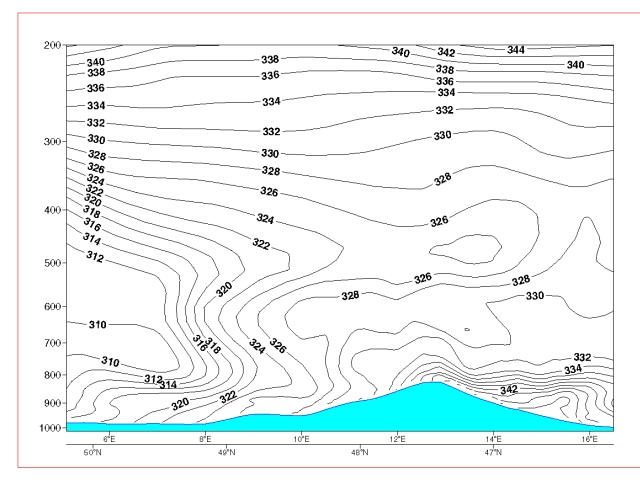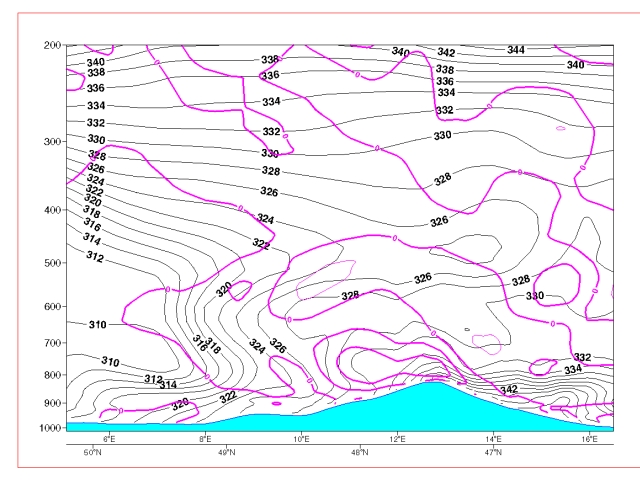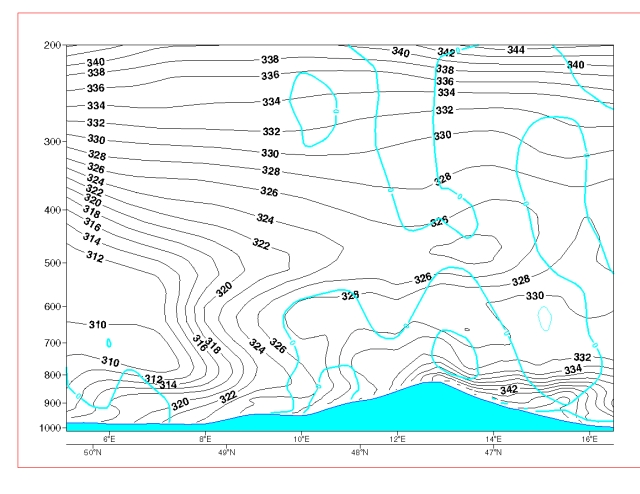Vertical Cross Section: 30 July 2005:06UTC




Isentropes
The isentropes show a configuration typical for a system with a pronounced thickness ridge in front of the cold front. The coldfront part in the isentropes shows two phenomena:
The isentropes show a configuration typical for a system with a pronounced thickness ridge in front of the cold front. The coldfront part in the isentropes shows two phenomena:
1. A downward inclined zone of high gradient as it is necessary for a frontal surface.
2. A bulge close in lower layers which is characteristic for a highly unstable situation.
The VCS was laid from position A to B. Click the image to enlarge.
